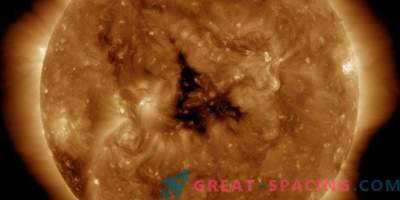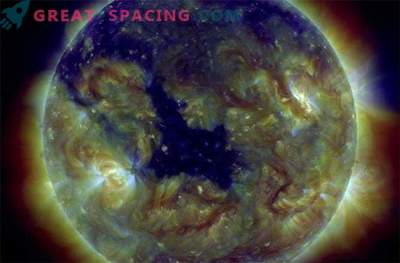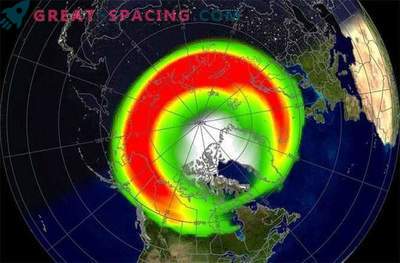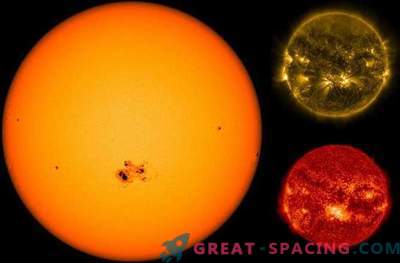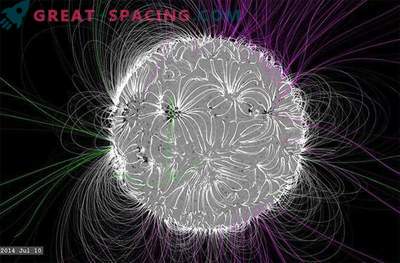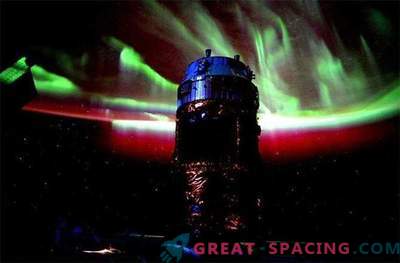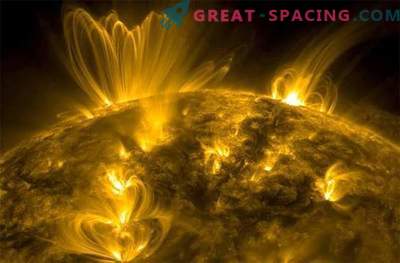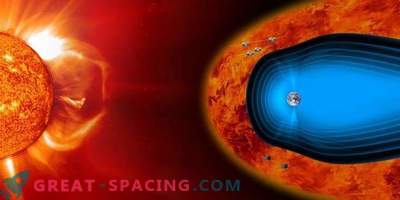
The NASA Solar Dynamics Observatory issued a solar storm warning around noon on Thursday, while the eruption of coronal masses caused a gliding blow to our planet. In those minutes, while these lines were written, the storm has already begun, but in the systematics it passes as a small storm, reaching S1 on the solar radiation scale. The most powerful storm is classified by level S5.
High energy particles are currently flying near the magnetosphere of our planet (a large magnetic bubble deflecting solar ions and preventing them from penetrating deep into the atmosphere).
Observations of the Sun make it possible to track such coronal holes that act like a fire hose at the beginning of the month, watering the Earth with a stream of high energy and high-energy particles of the solar wind. This intense stream of solar plasma has already initiated several powerful high-latitude auroras on October 7 and 8, a phenomenon that looks so impressive to astronauts and cosmonauts at international space stations.
The coronal holes depicted above — clearly visible dark spots in the solar magnetosphere (corona) —are regions with low plasma density, where open magnetic lines allow the plasma to quickly leave the sun. The light and therefore denser regions are filled with open lines, where the plasma is trapped, captured in the lower part of the corona by a magnetic loop that extends from the depths of the Sun to the corona itself. However, nowadays solar coronal holes have made a complete revolution around the sun and it seems that they have not changed their configuration, which, probably, will once again cause solar ions to splash out onto the Earth in the first week of November, igniting auroras like those observed last month.
In addition to the solar drama played out, according to the Spaceweather.com website, at present it should be noted that the Earth passes through a crease in the heliospheric current sheet. As the sun rotates, it constantly releases particles of the solar wind into space. Because of this rotation, particle fluxes spread throughout the Solar System, following the pattern of rotating lawn irrigation. Associated with this stream of particles, the current sheet looks like a curved vinyl record. This layer represents the boundary where the magnetic polarity switches from “north” to “south”. Passing through the layer and then changing the interplanetary polarity can lead to geomagnetic storms and increase the likelihood of auroras.
The eruptions of coronal masses give a high probability of aurora borealis - one of the most ambitious natural phenomena on our planet. However, when high-energy solar particles begin to interact with the magnetic field of our planet, unpleasant side effects may occur.
The main reason why the NASA Solar Dynamics Observatory and other government organizations (such as NASA, ESA, and JAXA, the Japanese space agency) embrace the Sun Observation and Space Weather activities, is just an attempt to predict how negative events in the solar corona can affect earthly life. Although our atmosphere and magnetosphere protect us from most of the radioactive threats emanating from space, our high-tech civilization may be vulnerable. High-energy particles, for example, disable satellites, or cause atmospheric currents that can burden powerful energy systems. Such effects can be a potential cause of multimillion and even trillion losses. Currently, the Sun has calmed down after several years of activity. Solar magnetic activity then grows, then decreases every 11 years. This phenomenon is known as the “solar cycle”. Now we are on the downward side of the curve of the cycle, but a slowdown in activity does not mean that the Sun is not at all active, as evidenced by various phenomena in our day.
